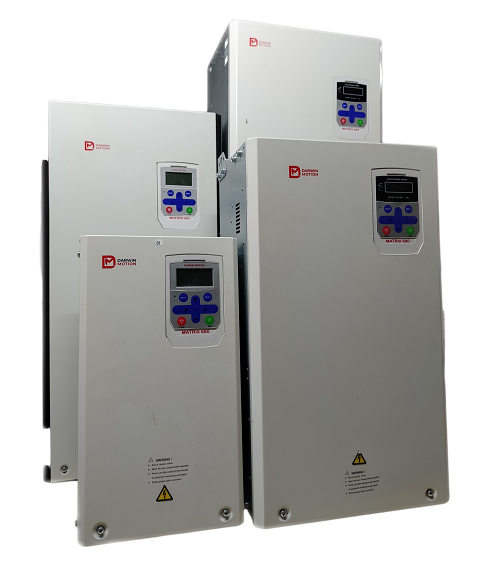Posted on 1st Jul 2024

Variable Frequency Drives (VFDs) are pivotal in modern industrial settings, offering unparalleled control over motor speeds. Understanding their maximum and minimum speed capabilities is crucial for optimizing efficiency, ensuring safety, and extending equipment lifespan.
The maximum speed of a VFD refers to the highest rotational speed at which the motor can operate efficiently without compromising safety or reliability. This parameter varies depending on the motor type, Darwin Motion VFD model, and application requirements. For instance, in applications like conveyor belts or centrifugal pumps, reaching optimal speeds quickly and maintaining them is crucial for operational efficiency.
Conversely, the minimum speed denotes the lowest rotational speed a motor can maintain while still operating effectively. This feature is particularly valuable in applications requiring precise control over low-speed operations, such as in HVAC systems for gradual adjustments in airflow or in precision machining for fine motor control.
Industrial Automation:
In manufacturing processes, ac drives enable precise control over machinery speeds, facilitating smoother operations and reducing wear and tear on equipment. This capability is vital in industries such as automotive manufacturing, where consistency and precision are paramount.
Energy Efficiency:
By allowing motors to operate at lower speeds when full power isn’t necessary, VFDs contribute significantly to energy savings. In HVAC systems, for example, adjusting fan speeds based on real-time demands reduces energy consumption while maintaining optimal indoor air quality and comfort.
Enhanced Process Control:
The ability to set both maximum and minimum speeds ensures that industrial processes remain stable and efficient. This control is essential in applications where variations in speed can affect product quality or process consistency.
Motor Characteristics:
The type of motor—whether induction, synchronous, or DC—dictates its operational limits with a VFD. Understanding motor specifications helps in selecting the appropriate VFD to achieve desired speed ranges effectively.
Different industries have varying speed control needs. For instance, in mining operations, VFDs must withstand harsh environmental conditions while maintaining consistent motor performance across a wide range of speeds.
Operating motors at extreme speeds, whether high or low, can generate heat. Proper cooling and ventilation systems are essential to ensure VFD longevity and reliability.
At lower speeds, VFDs can produce harmonics that affect power quality. Implementing harmonic filters or selecting VFDs with built-in mitigation features minimizes these disturbances.
As industries strive for greater efficiency and sustainability, VFD technology continues to evolve. Advances in power electronics and control algorithms promise enhanced performance across broader speed ranges, further optimizing industrial processes and energy consumption.
VFDs' maximum and minimum speed settings are pivotal in achieving optimal performance and efficiency in industrial applications. By understanding and effectively managing these parameters, businesses can reduce operational costs, enhance productivity, and maintain competitive advantages in increasingly demanding markets. As technology advances, VFDs remain indispensable tools for precision motor control and energy management in modern industrial settings.